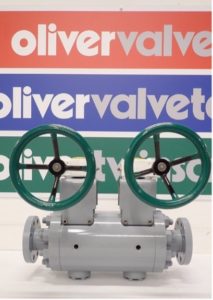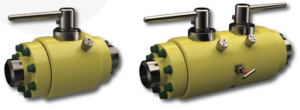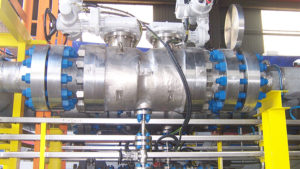Application: Mercury Removal Systems Customer: Various, Worldwide
The presence of mercury in hydrocarbons can cause problems with downstream processing units, as well as health and environmental issues.
Therefore, development of an improved process for effectively removing mercury from hydrocarbons before downstream processing into products would be a significant contributions in terms of monetary and also safety.
Operators main concern will be to ensure that the no further mercury build up which may result in breach of the sales gas specification limit for mercury. In addition the mercury may also end up in the condensate and produced water streams.
Solution
Oliver Valves manufactured and supplied integral DBBs & Monoflanges for a new MRU module for TML Northern Fields and also to a conversion of a Glycol skid to MRU skid for the TML Southern Fields.
As the MRU module and MRU skid are being used on existing platform, space and weight reduction is of grave concern and hence the usage of Oliver’s DBB valves.
Please see example on picture shown for another project showing MRU module design on an existing platform where simply addi- tional space and weight is a privilege.
Opportunity
• 60% of all new Gas processing plants and 100% of all new LNG plants will require mercury removal systems to meet new global legislation.
• There is an industry review currently underway for existing sites which will see a requirement to upgrade to meet new standards
• The incentive for the industry to become self regulating, is that a premium is paid for end product with lower mercury content and hence many operators are considering the viability of upgrade v return.
• On EIC there are currently 319 LNG and 36 Gas Processing unit (new) projects listed, all of which are expected to be executed over the next 5 years.
• There is also 74 refinery upgrades listed, all clearly indicating a substantial opportunity. * Est Market Value £ 18M (10-15 valves/unit @ £44K/unit)
• EIC Print Out –See attached (1 print out per sale territory)
Applications
Space and weight constraints seem to be the main driving factor in most projects, rather than utilising one large catalyst bed, process design calls for a number of smaller units, hence a large number of valves.
The use of the valves are two fold, at the inlet bed a full flow high pressure valve is required on new is generally specified as DBB, on upgrade being changed out for DBB (see picture showing two old single isolates at inlet). In addition to the inlet, smaller DDB are used as sampling valves along the process system to monitor degradation in the catalysis bed and hence determine maintenance intervals.


